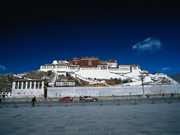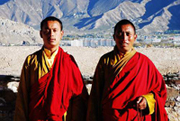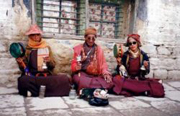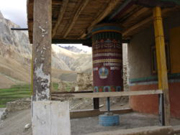

Tibetan
A brief account of Tibet, its origin, how it grew into a great military power and carved for itself a huge empire in Central Asia, then how it renounced the use of arms to practise the teachings of the Buddha and the tragic conseguences that it suffers today as a result of the brutal onslaught of the Communist Chinese forces is given in the following passages.
Five hundred years before Buddha Sakyamuni came into this world i.e., circa 1063 B.C., a semi-legendary figure known as Lord Shenrab Miwo reformed the primitive animism of the Shen race and founded the Tibetan Bon religion. According to Bonpo sources there were eighteen Shangshung Kings who ruled Tibet before King Nyatri Tsenpo. Tiwor Sergyi Jhagruchen was the first Shangshung King.
Shangshung, before its decline, was the name of an empire which comprised the whole of Tibet. The empire known as Shangshung Go-Phug-Bar-sum consisted of Kham and Amdo forming the Go or Goor, U and Tsang forming the Bar or Middle, and Guge Stod-Ngari Korsum forming the Phug or Interior.
As the Shangshung empire declined, a kingdom known as Bod, the present name of Tibet, came into existence at Yarlung and Chongyas valleys at the time of King Nyatri Tsenpo, who started the heroic age of the Chogyals (Religious Kings). Bod grew until the whole of Tibet was reunited under King Songtsen Gampo, when tha last Shangshung King, Ligmigya, was killed.
The official Tibetan Royal Year of the modern Tibetan calendar is dated from the enthronement of King Nyatri Tsenpo in 127 B.C. This lineage of Tibetan monarchy continued for well over a thousand years till King Tri Wudum Tsen, more commonly known as Lang Darma, was assassinated in 842 A.D.
Most illustrious of the above kings were Songtsen Gampo, Trisong Detsen and Ralpachen. They are called the Three Great Kings.



Contact Me:Dapeng li